Bristlecone pine trees are the oldest continuously standing living trees on the planet. With that said, clonal systems of trees date back further but are not the original specimen like with the Bristlecone pines. Other ancient clonal systems include 80,000-year-old Quaking Aspen grove in Utah, 11,000 plus year old Creosote Bush stands in California’s Mojave Desert and a root system of a Norway Spruce tree in Sweden found to to be almost 10,000 years old.
To reach the Bristle Cone Forest take the 395 to the 168 (Westgard Pass). A small park and information center is located at the junction of the 395 and 168. An information kiosk describes the Bristlecone Pines and the surrounding area. A giant sequoia is located here which supposedly was planted to commemorate the opening of Westgard Pass. This tree is named after Teddy Roosevelt.
Turn onto the 168 and drive for about 15 or so miles until you reach the turn off for the Bristlecone Forest (on your left hand side). This turnoff is just past the summit of Westgard Pass (around 7200 feet). NOTE: be extremely careful when you drive back down the Westgard Pass as this is is one of the steepest roads we have been on, outside of San Francisco. Your brakes can easily overheat if you use them too much. We highly recommend taking your time descending and gearing down to very low gears. Several times we have seen smoking brakes (especially from trucks or older vehicles) and smelled the terrible odor of burnt out brakes at the bottom of the pass.
Several campgrounds are located in and near the park. Four campgrounds are located at the junction of Highway 168 (Westgard Pass) and White Mountain Road (the road that leads through the actual Bristle cone Forest).
These particular campgrounds are named Fossil, Pinyon, Poleta, and Juniper. They sit at an elevation of approximately 7200 feet. A bit further north on White Mountain Road you will find another campground called Grandview Campground which lies at an elevation of approximately 8600 feet.
The oldest living tree in the world is over 5,000 years and is located in this forest. It predates another tree here called Methuselah which is over 4800 years old! Note: a tree named Prometheus, was cut down in 1964 near Wheeler Peak in Nevada and was supposedly older than Methuselah.
The location of these two ancient trees is kept a secret from the general public; this is a shame to keep something this special hidden from the enjoyment of visitors who come here to specifically seek out the oldest of the oldest trees in this grove and be humbled by their presence.
There are over 20 trees in this grove that are over 4,000 years old. Dr. Edmund Schulman of the University of Arizona first discovered these trees in 1953 after hearing rumors of the ancient trees. Scientists have discovered dead wood from the Bristle cone trees in this area almost 11,000 years old. They used a particular cross dating method based on the rings of the tree to better calibrate radiocarbon dating; once this was discovered and implemented, ancient sites around the world were much more accurately dated.
The only visitor center is located at Schulman Grove (at 10,000 feet). This center was burnt down a number of years ago by an arsonist (later caught) – the current visitor center dates from 2012. It contains several excellent pictorial displays showing other activities happening elsewhere in the world as the Bristlecone trees were beginning their life. One chart shows particular pines already several hundred years old as the Egyptians were beginning to construct their great pyramids. Besides the excellent educational displays the visitor centers sells bottled water and other miscellaneous snacks, photographs, and other art forms depicting the Bristle cone pine. If you need a rest from the altitude and don’t mind spending 20 minutes indoors – be sure to catch the highly informative video about Bristlecone pine trees.
You will want to purchase your park pass here as well. It costs $3 per person, with a maximum fee of $6 per car.
NOTE: There is no gas, phone or water available in the Bristlecone park. One short part of the road often has cell service – about 2-3 miles before you reach the main visitor’s center. During the winter months the road to the visitor’s center will often be closed due to snow – during heavier snow years, this also extends into the Spring months. There are at least two gates that can be closed – the closest one to the Visitor’s center is about 2 miles away. Those with snowshoes and cross country skiers often can make their way into the Bristlecones over the snow covered road.
From the visitor center it is about a 4.5 mile easy hike round-trip along the Methuselah trail. Fortunately or unfortunately depending on how you look at it this tree is cloaked in a veil of secrecy and it is not identified. The oldest trees are found about half way through this hike. From the visitor center you can also choose shorter hikes – the Discovery trail is 1 mile (the oldest trees are found about 1/2 way through this hike near the stone steps on the trail) and the Bristlecone Cabin trail is 2 miles round trip.
Range led discussions of the Bristlecone pine trees are highly educational. They take place immediately outside the visitor center and highlight the longevity of the trees, how to take a core sample to count the tree rings, how to identify the oldest of the trees and many other details.
In 2015 many small Bristlecone pine trees were discovered growing behind the visitor center (based on some earth excavation that took place). This is an easy opportunity to see a number of various age trees. They grow extremely slowly – a 5 year old tree was about an inch tall. One tree on the slope near the entrance to the visitor center has been aged at about 3,000 years. Look up at this slope – see if you can figure out which one it is!
While the forest is nearly entirely dominated by Bristlecone pine trees, a very small percentage of Limber pine trees also grow here. And as the earth continues to increase it’s temperature, an infinitesimal amount of Pinon pines are starting to grow at a higher elevation.
Another shorter hike but located at a higher elevation is the Patriarch Grove hike. This is located 12 miles on the main dirt road from the Schulman Grove. Just before you climb up to the grove you will drive on a mile or so section of pavement. At this site you will find several hundred feet from the small dirt/rock parking lot the largest Bristlecone pine in the world. It is labeled along with several other pines in the vicinity.
A 1/4 mile trail winds through these high elevation pines. Elevation here ranges from 11,400 to about 11,500 feet. The Bristlecone Pine road is very windy and steep in places from the Westgard turnout – but it is paved to the Schulman grove. From this grove you can drive another 12 miles higher into the mountains on a dirt road. The visitor center at Schulman grove is staffed 7 days a week during the summer months – from mid June until the end of September.
For more information visit the Inyo National Forest web site at: www.fs.usda.gov/detail/inyo/specialplaces/?cid=stelprdb5129900 (with a very weird URL such as this one, this url won’t be live for long). The National Forest service is *notorious* for changing URL’s and not adding redirects when they do so. If you notice this URL is not working any longer – please Email Us .
- Example of approximately 5-year old Bristlecone Pine
- Approximately 8,000 year old wood

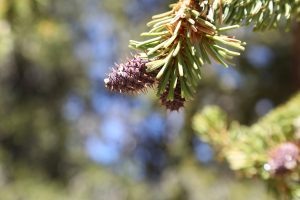
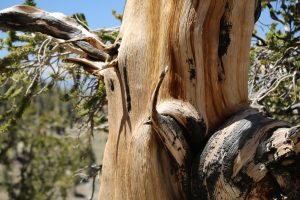
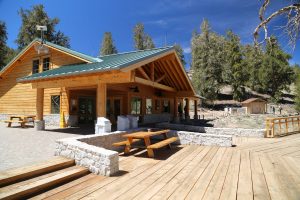
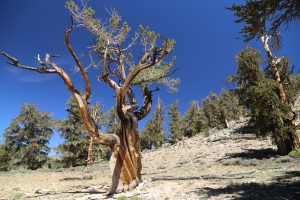
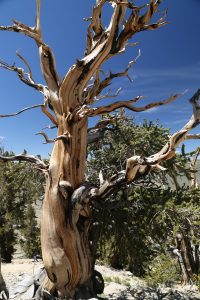
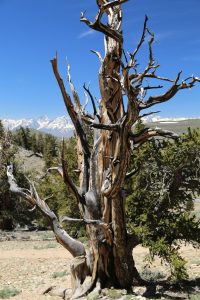
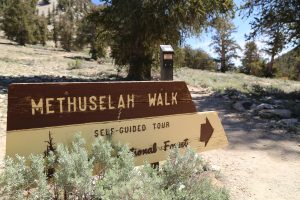
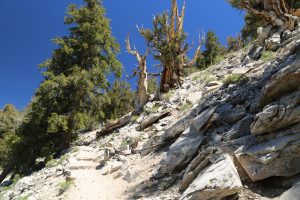
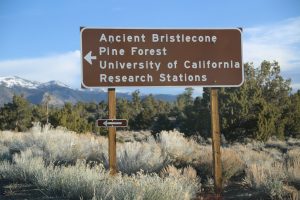
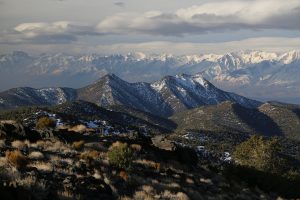
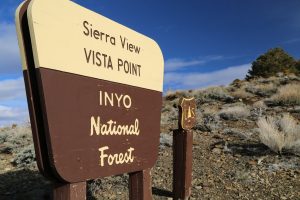
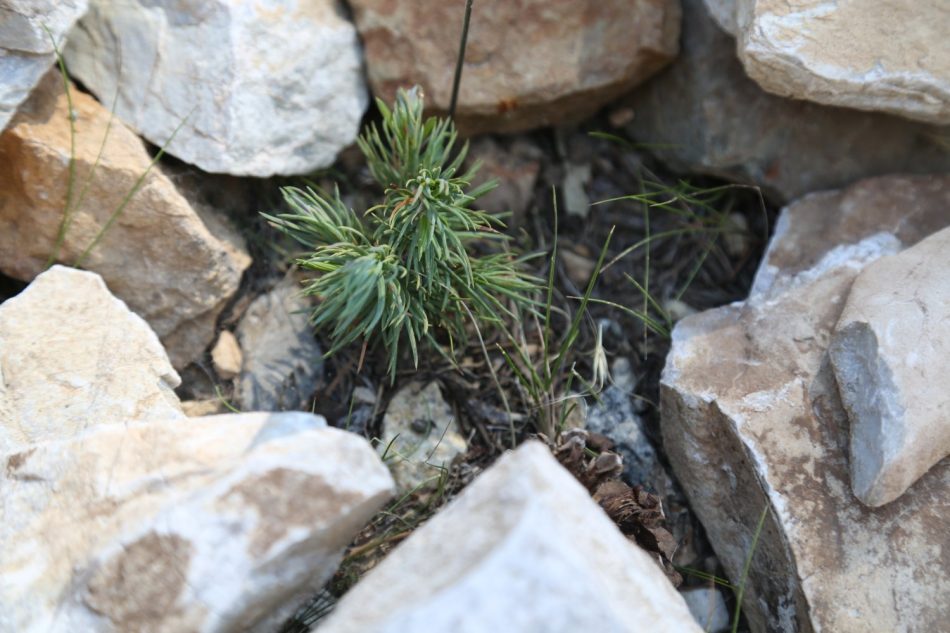

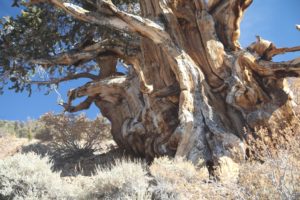
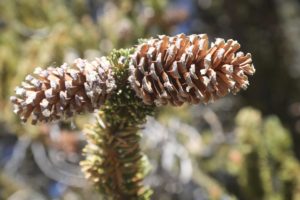
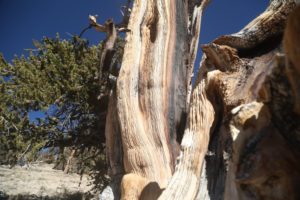
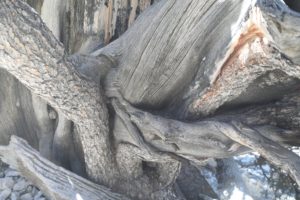
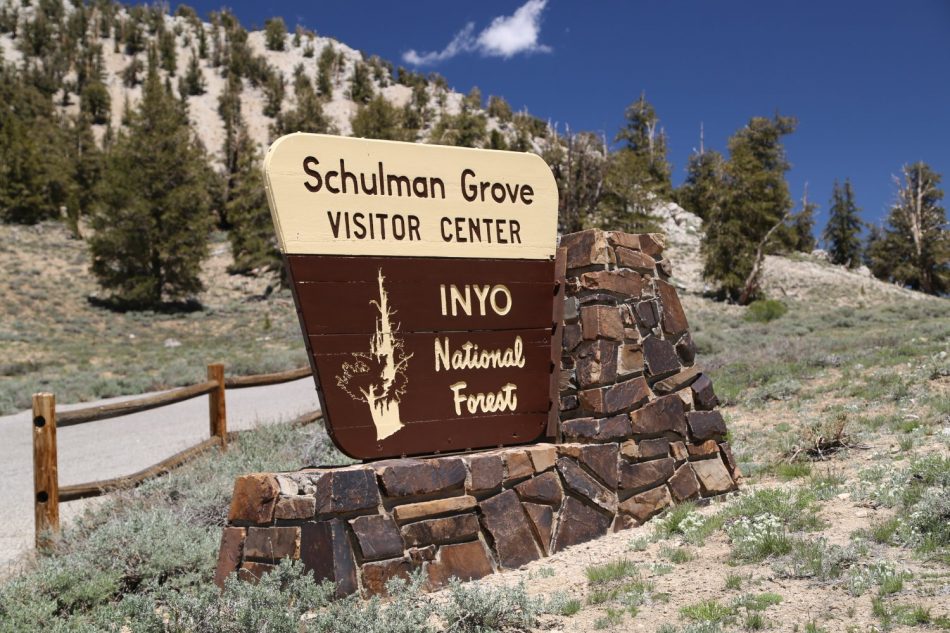

Leave a Reply